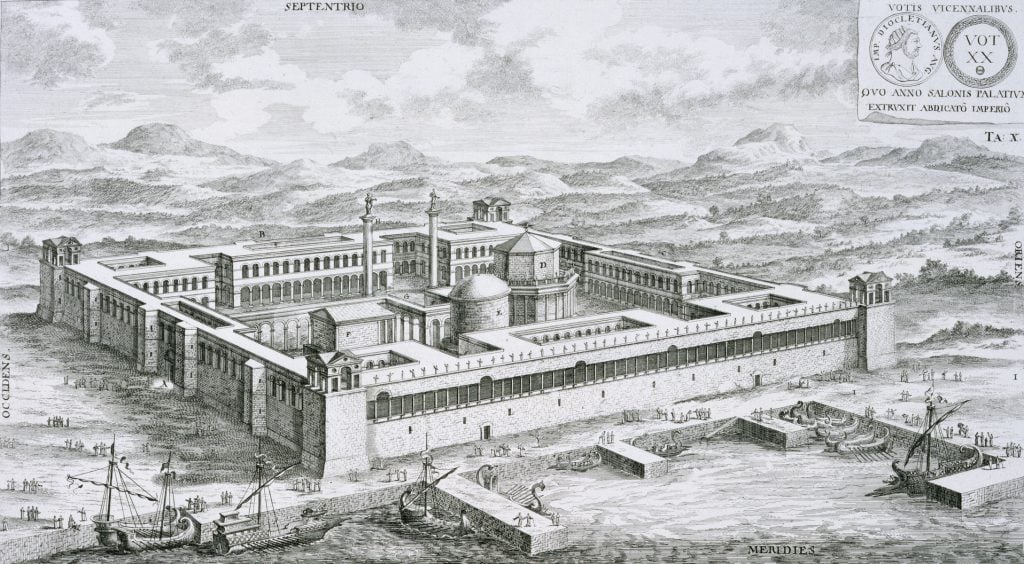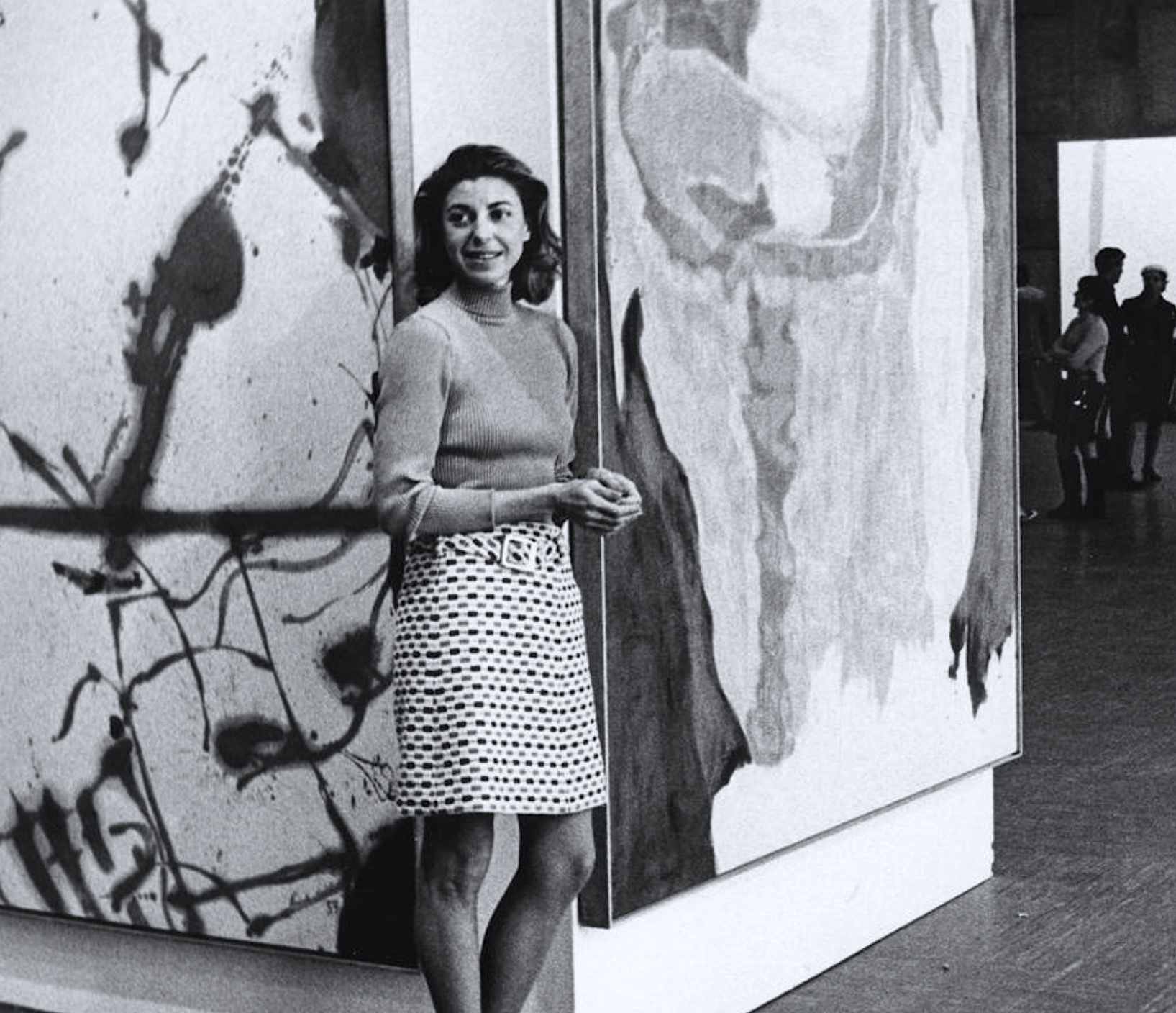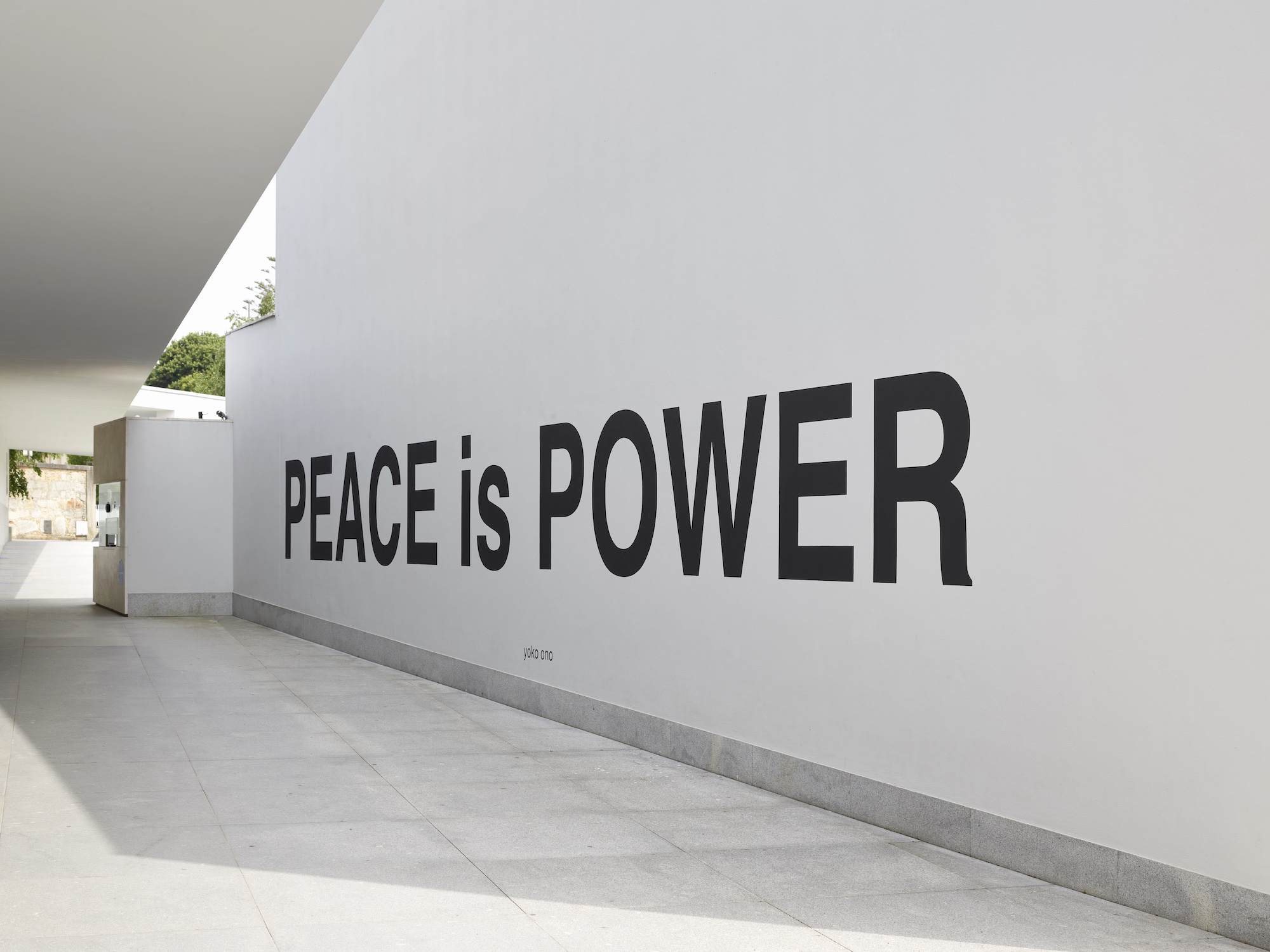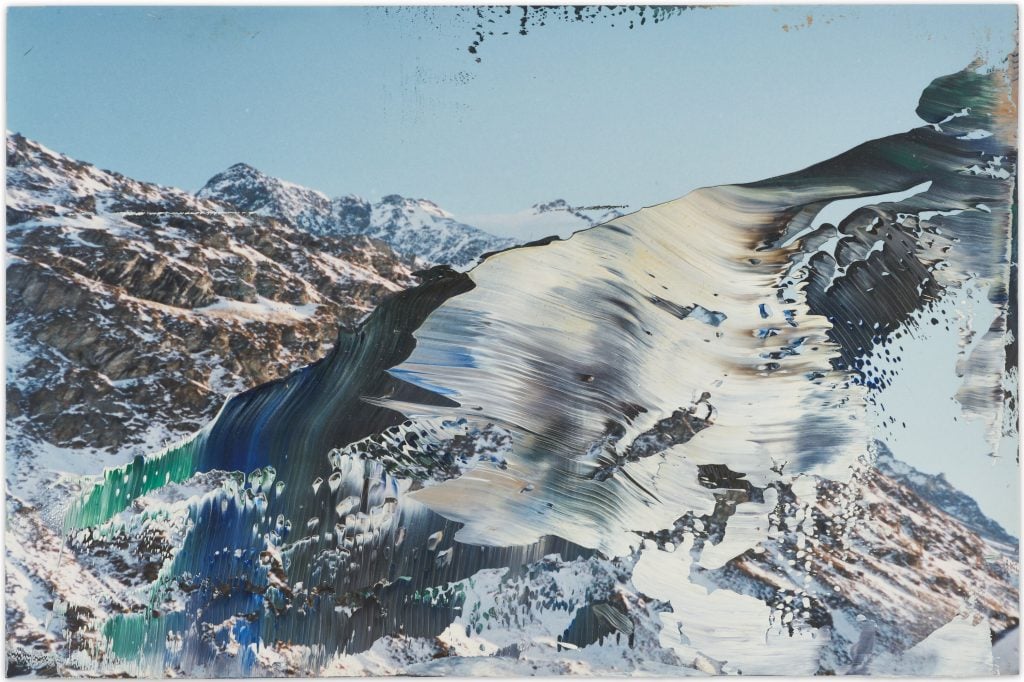Sólheimasandur
2018 - Film & Video (Film & Video)
6:22 minutes
Calderón & Piñeros (La Decanatura)
Calderón & Piñeros (La Decanatura) refer to Sólheimasandur as a work that tackles the issue of “the ruin as a tourist destination.” As they say, “at the end, tourists become an essential part of this unusual, beautiful, and—at the same time—banal landscape.” The video features a plane wreck on Sólheimasandur beach in Iceland, where a navy plane belonging to the United States Army crashed in 1973 due to fuel exhaustion. The plane appears as an anthropomorphized figure: lying on the sands of the beach without its wings, it resembles a sculptural torso that has lost all its limbs, with cables coming out of its body appearing as internal organs. These injuries remind the viewer of the danger inherent in these artifacts, and the potential for both heroism and death implicit in flying them to far-away territories. Following several shots of the plane sitting in the fog alone, humans slowly start to appear in the scenery. The appearance of a man on a Segway touring around on the black sand—which resembles the texture of the moon—is followed by shots of tourists taking endless selfies in front of the plane. With the fog surrounding the scene and the unsettling soundtrack, an uncanny feeling builds, turning these individuals into subjects waiting for their unknown future—possibly in a far-away galaxy. These individuals’ bodies become an echo of the broken torso that belongs to the helpless plane lying on the black sand. In this atmosphere, it’s hard to know whether these individuals are aware of the fact that they are being recorded, and whether the actions are real-life encounters or staged events—an underlying characteristic prevalent in the collective’s artistic practice.
Calderón & Piñeros (formerly La Decanatura) is a collective composed of artists Elkin Caldero? Guevara and Diego Pin?ros García, whose projects generate new approaches to art from hybrid perspectives and disciplines, questioning hegemonic forms of knowledge and power. Calderón & Piñeros mobilizes displacement and recontextualization in order to explore alternate presents and futures and to create links between memory and the ruins of the past in order to question our assumptions of reality and linear readings of history. Through the moving image and building on a “poetics of time and space”, the play with mise-en-scene to create events, places and objects that might or might not be “real”. These alternative narratives produce dislocations and alterations that lead to new readings of reality.
Colors:
Related works sharing similar palette

© » ARTEFUSE
Art Basel reveals 287 leading galleries and expanded city-wide program for its 2024 edition in Basel, Switzerland (News) - ArteFuse Art Basel reveals 287 leading galleries and expanded city-wide program for its 2024 edition in Basel, the first led by the show’s new Director Maike Cruse With 287 premier galleries from 40 countries and territories, Art Basel will once again bring together the international art world at its marquee fair in Basel, Switzerland...
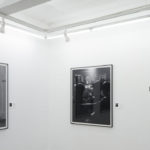
© » ARTS EQUATOR
The photographer capturing the eerie illustrations of Thai legend Hem Vejakorn (via SEA Globe) | ArtsEquator Thinking and Talking about Arts and Culture in Southeast Asia Articles September 21, 2018 Photographer Pattana Chuenmana has reimagined the illustrations of Hem Vejakorn, a well-known Thai artist and writer, in moving black-and-white still images...

© » DIANE PERNET
Dutch Emerging: Ruben Janssen X GRA Fashion Bachelor 2023 – A Shaded View on Fashion From the back to the middle and around again — Ria’s wedding dress, Alan’s patterns and John’s model: ‘My project is an investigation into evolution, explored through prisms of biology, computation and a poetic personal narrative, shifting between timescales on an evolutionary timeline...
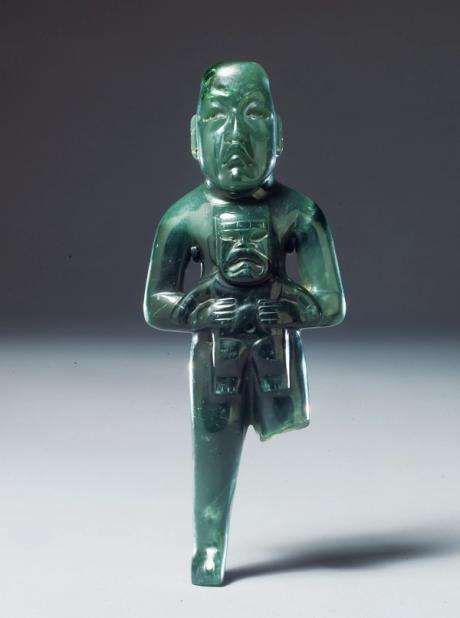
© » THEARTNEWSPER
Kimbell Art Museum acquires important cultural touchstone of Olmec art Art market Museums & heritage Exhibitions Books Podcasts Columns Technology Adventures with Van Gogh Search Search Museums & Heritage news Kimbell Art Museum acquires important cultural touchstone of Olmec art The jade statuette of an Olmec ruler holding a baby were-jaguar will be exhibited as the centrepiece of the Texas museum's ancient American collection Theo Belci 14 December 2023 Share Standing Figure Holding a Were-Jaguar Baby (around 900BC-300BC) Photo: Justin Kerr., courtesy of the Justin Kerr Maya archive, Dumbarton Oaks, Trustees for Harvard University, Washington, DC The Kimbell Art Museum in Fort Worth, Texas, has acquired Standing Figure Holding a Were-Jaguar Baby (around 900BC-300BC), a jade statuette at the centre of Olmec civilisation studies since the mid-20th century...

© » KADIST
Joanna Piotrowska
2015This selection of photographs taken between 2014 and 2019 focus on Piotrowska’s long-term preoccupation with issues of domesticity and containment...

© » SLASH PARIS
Le Droit à l’oubli — Musée Transitoire #3 — Musée Transitoire — Exposition — Slash Paris Connexion Newsletter Twitter Facebook Le Droit à l’oubli — Musée Transitoire #3 — Musée Transitoire — Exposition — Slash Paris Français English Accueil Événements Artistes Lieux Magazine Vidéos Retour Précédent Suivant Le Droit à l’oubli — Musée Transitoire #3 Exposition Techniques mixtes Jean-Charles de Quillacq, vue de l’exposition Le Droit à l’oubli, Musée Transitoire #3 © Musée Transitoire Le Droit à l’oubli Musée Transitoire #3 Encore environ 2 mois : 26 janvier → 30 mars 2024 Date de clôture provisoire Artistes : Bas Jan Ader, Mégane Brauer, Sarah Bucher, A...

© » KADIST
Enrique Ramirez
2017Ramirez’s The International Sail is the fifth in a series that features an upside-down worn out, mended and fragmented boat sail...

© » KADIST
Maria Taniguchi
2012Untitled (Celestial Motors) is a visual meditation on an icon of modern urban Philippine life—the jeepney...
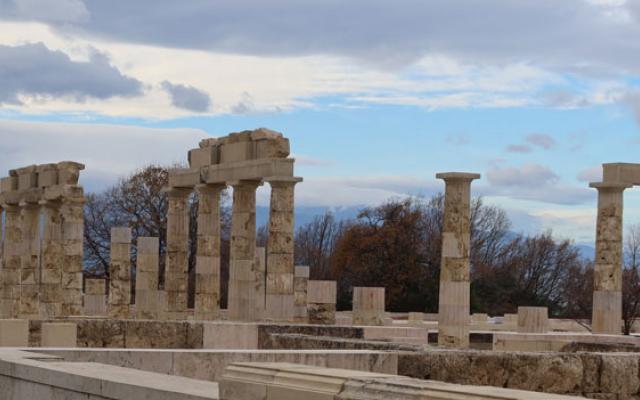
© » ART & OBJECT
The Site Where Alexander the Great was Crowned King Reopens and More News | Art & Object Skip to main content Subscribe to our free e-letter! Webform Your Email Address Role Art Collector/Enthusiast Artist Art World Professional Academic Country USA Afghanistan Albania Algeria American Samoa Andorra Angola Anguilla Antarctica Antigua & Barbuda Argentina Armenia Aruba Ascension Island Australia Austria Azerbaijan Bahamas Bahrain Bangladesh Barbados Belarus Belgium Belize Benin Bermuda Bhutan Bolivia Bosnia & Herzegovina Botswana Bouvet Island Brazil British Indian Ocean Territory British Virgin Islands Brunei Bulgaria Burkina Faso Burundi Cambodia Cameroon Canada Canary Islands Cape Verde Caribbean Netherlands Cayman Islands Central African Republic Ceuta & Melilla Chad Chile China Christmas Island Clipperton Island Cocos (Keeling) Islands Colombia Comoros Congo - Brazzaville Congo - Kinshasa Cook Islands Costa Rica Croatia Cuba Curaçao Cyprus Czechia Côte d’Ivoire Denmark Diego Garcia Djibouti Dominica Dominican Republic Ecuador Egypt El Salvador Equatorial Guinea Eritrea Estonia Eswatini Ethiopia Falkland Islands Faroe Islands Fiji Finland France French Guiana French Polynesia French Southern Territories Gabon Gambia Georgia Germany Ghana Gibraltar Greece Greenland Grenada Guadeloupe Guam Guatemala Guernsey Guinea Guinea-Bissau Guyana Haiti Heard & McDonald Islands Honduras Hong Kong SAR China Hungary Iceland India Indonesia Iran Iraq Ireland Isle of Man Israel Italy Jamaica Japan Jersey Jordan Kazakhstan Kenya Kiribati Kosovo Kuwait Kyrgyzstan Laos Latvia Lebanon Lesotho Liberia Libya Liechtenstein Lithuania Luxembourg Macao SAR China Madagascar Malawi Malaysia Maldives Mali Malta Marshall Islands Martinique Mauritania Mauritius Mayotte Mexico Micronesia Moldova Monaco Mongolia Montenegro Montserrat Morocco Mozambique Myanmar (Burma) Namibia Nauru Nepal Netherlands Netherlands Antilles New Caledonia New Zealand Nicaragua Niger Nigeria Niue Norfolk Island Northern Mariana Islands North Korea North Macedonia Norway Oman Outlying Oceania Pakistan Palau Palestinian Territories Panama Papua New Guinea Paraguay Peru Philippines Pitcairn Islands Poland Portugal Puerto Rico Qatar Romania Russia Rwanda Réunion Samoa San Marino Saudi Arabia Senegal Serbia Seychelles Sierra Leone Singapore Sint Maarten Slovakia Slovenia Solomon Islands Somalia South Africa South Georgia & South Sandwich Islands South Korea South Sudan Spain Sri Lanka St...

© » KADIST
Steffani Jemison
In Escaped Lunatic , a steady stream of figures run across the screen, sprinting, jumping, and rolling through the streets of Houston...

© » ARTS EQUATOR
Weekly Picks: Malaysia (26 Nov – 2 Dec 2018) | ArtsEquator Thinking and Talking about Arts and Culture in Southeast Asia Weekly To Do November 26, 2018 Symposium – How Easily Modernism Could Be Disturbed , at ILHAM Gallery, 1 Dec, 10am–6:30pm A symposium in conjunction with the Latiff Mohidin: Pago Pago (1960–1969) exhibition in the gallery...

© » SLASH PARIS
Le Droit à l’oubli — Musée Transitoire #3 — Musée Transitoire — Exhibition — Slash Paris Login Newsletter Twitter Facebook Le Droit à l’oubli — Musée Transitoire #3 — Musée Transitoire — Exhibition — Slash Paris English Français Home Events Artists Venues Magazine Videos Back Previous Next Le Droit à l’oubli — Musée Transitoire #3 Exhibition Mixed media Jean-Charles de Quillacq, vue de l’exposition Le Droit à l’oubli, Musée Transitoire #3 © Musée Transitoire Le Droit à l’oubli Musée Transitoire #3 Ends in about 2 months: January 26 → March 30, 2024 Date de clôture provisoire Artistes : Bas Jan Ader, Mégane Brauer, Sarah Bucher, A...

© » KADIST
Like an Attali report, but different June 15 – July 27, 2008 Curator: Cosmin Costinas With: Yael Bartana, Gregg Bordowitz, Heman Chong, Ciprian Muresan, Deimantas Narkevicius, Redza Piyadasa, Pushwagner, Anatoli Osmolovsky, Mona Vatamanu & Florin Tudor The Attali Report (or the Report of the Commission for the Liberation of French Growth), commissioned by President Sarkozy, was published half a year ago, provoking a long series of discussions, mainly confined to the French public arena and mainly focused on the report’s concrete proposals, set to implement a neoliberal model for the French economy and society...

